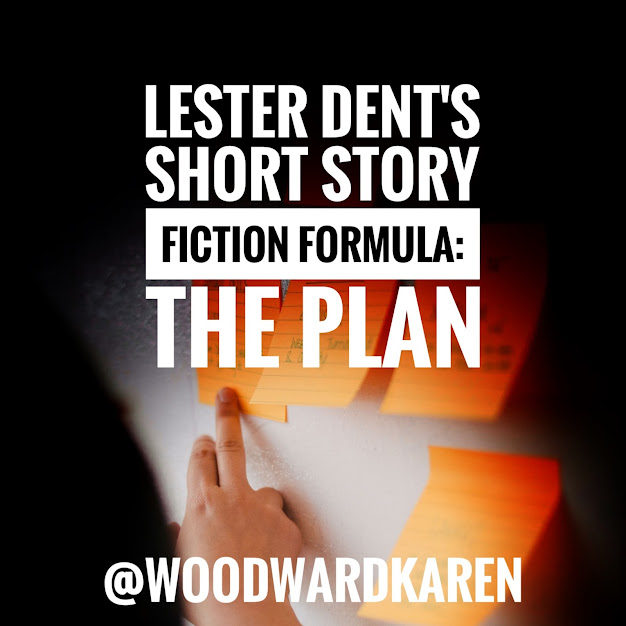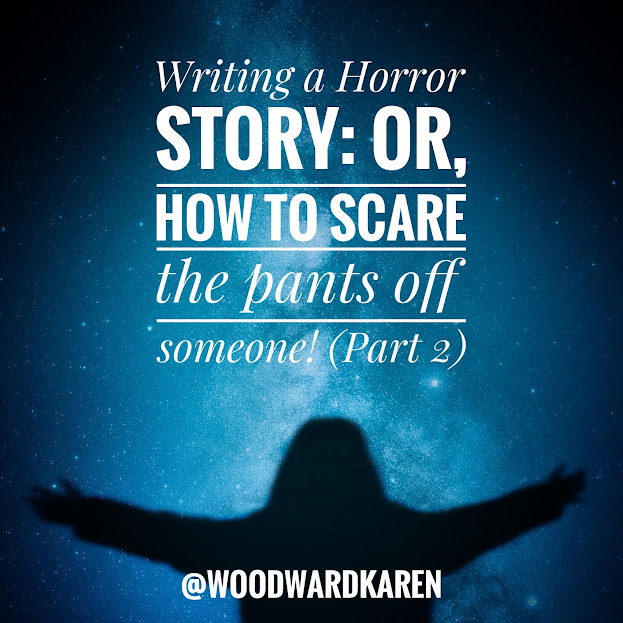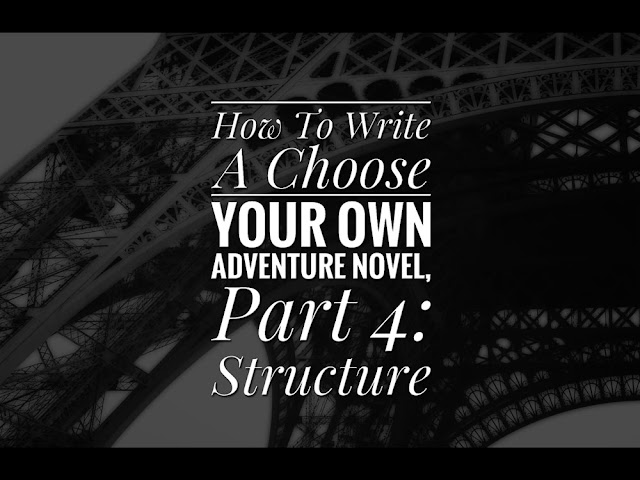There are many stories that don't fit the hero’s journey. For example, the movies Psycho and The Princess Bride. And that's great! There are as many ways to write a story as there are writers.
I mention this to emphasize that what I am going to talk about is only one way of doing things. If it doesn’t work for you, or you have developed your own way, great! However, if you are looking for an example of how things could be done, this is one possible way.
Narrative Setting
Narrative setting is the setting where the events of the story take place.
The story world includes, among other things, the physical environments your characters will encounter as well as the groups they interact with. You can create these environs from your imagination or you can set the story in the actual world.
Conjuring a story world from nothing but the materials of your imagination may save long hours of research, but keep in mind that the story world (unlike the real one!) needs to be consistent. A happy medium between these two is to set the tale in a fictional world but to use the actual world as a starting point. By changing aspects of the actual world one can often produce a setting that is both unique and plausible.
Social Setting
However you go about crafting your story world, the most time-consuming, intricate and important aspect of a character's environment is their social environment.
What are the rules of your world's societies, rules both written and unwritten? What sorts of pair bonds are sanctioned? What are their norms, their unwritten rules? Are certain practices, certain actions, sanctioned but discouraged?
Getting finer grained, what kinds of groups, or sub-groups, does the society contain? By this I mean any kind of group: political, recreational, medical, artificial, criminal, natural, sanctioned and unsanctioned. And if you see fit to give your world something like the internet, don't forget online groups!
The most important environment for social creatures such as ourselves is our social environment; our family, our friends, our coworkers, our distant relatives, our facebook friends. Of course, your protagonist need not be sociable! Let your imagination run wild. Anything is fair game as long as it's believable.
Above all, think about ways to introduce opportunities for conflict when creating a story world.
The Elements of Setting: Time
What time of year is it in the story? Spring, Summer, Fall or Winter? If this is a fictional world, does it have seasons? How much time passes in your story? Hours? Days? Months? Years?
Is there anything unusual about the flow of time in your narrative? Is your story written as a stream of consciousness? Does your novel employ time-jumps for flashbacks to convey the story?
The Elements of Setting: Place
Where does your story take place? What is its geography? Is it an unexplored wilderness or is it well populated? Does the story take place in a town? A city? A tropical jungle? A rainforest? Is the place barren? Lush? Isolated? Densely populated?
Is there water nearby? A pond? A sea? Is the air dry or wet? Is there snow at Christmas time? What sports or hobbies could a person easily engage in given the features of the area? Snowboarding? Skiing? Swimming? Surfing? What sports couldn't your characters do? For example, could your characters swim without risking hypothermia in December?
The Elements of Setting: Circumstances
What social groups is your character involved in? Are they religious? Spiritual? Politically involved? Do they have a large family? Small family? No family? If they're a loner, do they have a network of friends online? What kind of social groups is your character a part of at work? Are they self-employed? Unemployed? Are they the first one at the water cooler in the morning, gossiping, or do they keep to themselves? Do they get along with their boss?
What are the signs of group inclusion? Do your characters have an accent? Do they wear a uniform, or some sort of special clothing? Do they have markings that identify them as part of a particular group?
Do different groups, different societies or cultural groups, have different accents? Different ways of speaking?
How do these marks of social inclusion, these accents and languages, differ from those which existed a century ago? A millennium ago? Also, what will these groups, these societies, be like a century--or a millennium--from now?
Setting & Scenes
Let’s talk about setting as it relates to each scene.
I've touched on some of this information above, but let's get specific. Stories are made up of scenes and scenes occur at a place and a time.
For each scene, in addition to knowing what season it is, know (if outdoors) what the weather is like, what characters are in the scene, what happened just before the scene started and what will happen just after the scene ends. Also know what time of day it is. Is it morning or high noon? Nighttime? Twilight? The witching hour? You don’t have to--you likely shouldn’t!--put all this information in the scene, but it helps to know.
What associations do the main characters have about this time? What memories might it invoke? For instance, a character might wake during the witching hour and remember a nightmare they had as a child. (This introduces conflict: the character would like to sleep but the nightmare, and now the memories invoked by it, trap them in the waking world.)
Place: Indoors? Outdoors?
If the scene takes place outdoors what's the weather like? Is the sun hidden behind clouds turning day into twilight? Is it nighttime, yet lightning flashes making the landscape bright as day? Is it snowing? Raining? Does the unbearable heat of the sun bake everything to a brittle hardness? Are the characters in the Antarctic? Are they isolated by distance and the unbearable, bitter cold? What associations might they have to snow? How about rain?
While an adult might hate to wake up to a winter wonderland, a child would likely be overjoyed--especially if it means a snow day!
If the scene takes place indoors, what are the characters' surroundings like? Are they lavish? Poor? Shabby? Drab? Colorful? Ostentatious? Is it a human-made structure or natural, something like a cave.
Wherever your characters are, were they invited here? Are they comfortable here? Does this place make them feel at home or are they unsure how to act?
A room could be lavish and yet make a character uneasy because, while they have always desired it, they are unused to such luxury. Another character, one equally uncomfortable in such surroundings, might feel the urge to destroy it. Setting can be used to develop character. Before we examine that, though, let's briefly look at the importance of being able to use setting to generate conflict.
Conflict
I've mentioned this before but it bears repeating. One thing all stories must have, whatever the story world is like, is conflict. Political parties contend with each other. Countries go to war. Social groups hold diametrically opposed yet strongly held views about what constitutes appropriate conduct.
What do your characters believe? Where in this ever shifting maze of interconnectedness do they fit? What groups do they belong to? What do they believe about the world? Which social practices and which social institutions do they embrace? How do these preferences generate conflict both within and between characters?
It is one thing for a character to understand what sort of behavior a particular society expects from its members, and quite another whether, and to what extent, they will go along with it.
Writing Challenge
Select one of your favorite books and try to answer the following questions:
- What is the setting for the story?
- Does the world have seasons? If so, during what season, or seasons, does the story take place?
- How much time elapses during the story?
- What is the geography of the story world like?
- How many distinct social groups exist and what characteristics distinguish one from another?
- Which aspects of the setting created the most conflict and how was it generated?
A Thought Experiment
Imagine two societies are remarkably similar but one--Society A--helped defend the surrounding region against an enemy while the other--Society B--did nothing. As a result, many citizens in Society A despise Society B. It's winter, food is scarce, and a fire has ripped through Society B destroying its food reserves. Many in Society B accuse Society A of setting the fire. One thing is certain, unless Society B gets food many of its citizens will starve to death. What will Society B do? Attack the city that defended it? What will Society A do? Share it's food reserves with the city that not only didn't help defend against the enemy but that now accuses them of sabotage?
Given this setting, who would be your protagonist? I think I would choose a child from Society B who discovers evidence that their food reserves were destroyed by the enemy they thought Society A had defeated. But will he be believed?
Okay, that’s it! This was a bit of a grab bag of ideas. I hope you got something from it. I’ll talk to you again soon. In the meantime, good writing!
Other posts in this extended series (I'm blogging a book):
How to Write a Genre Story: The Index
Where you can find me on the web:
Blog posts you might like:
















